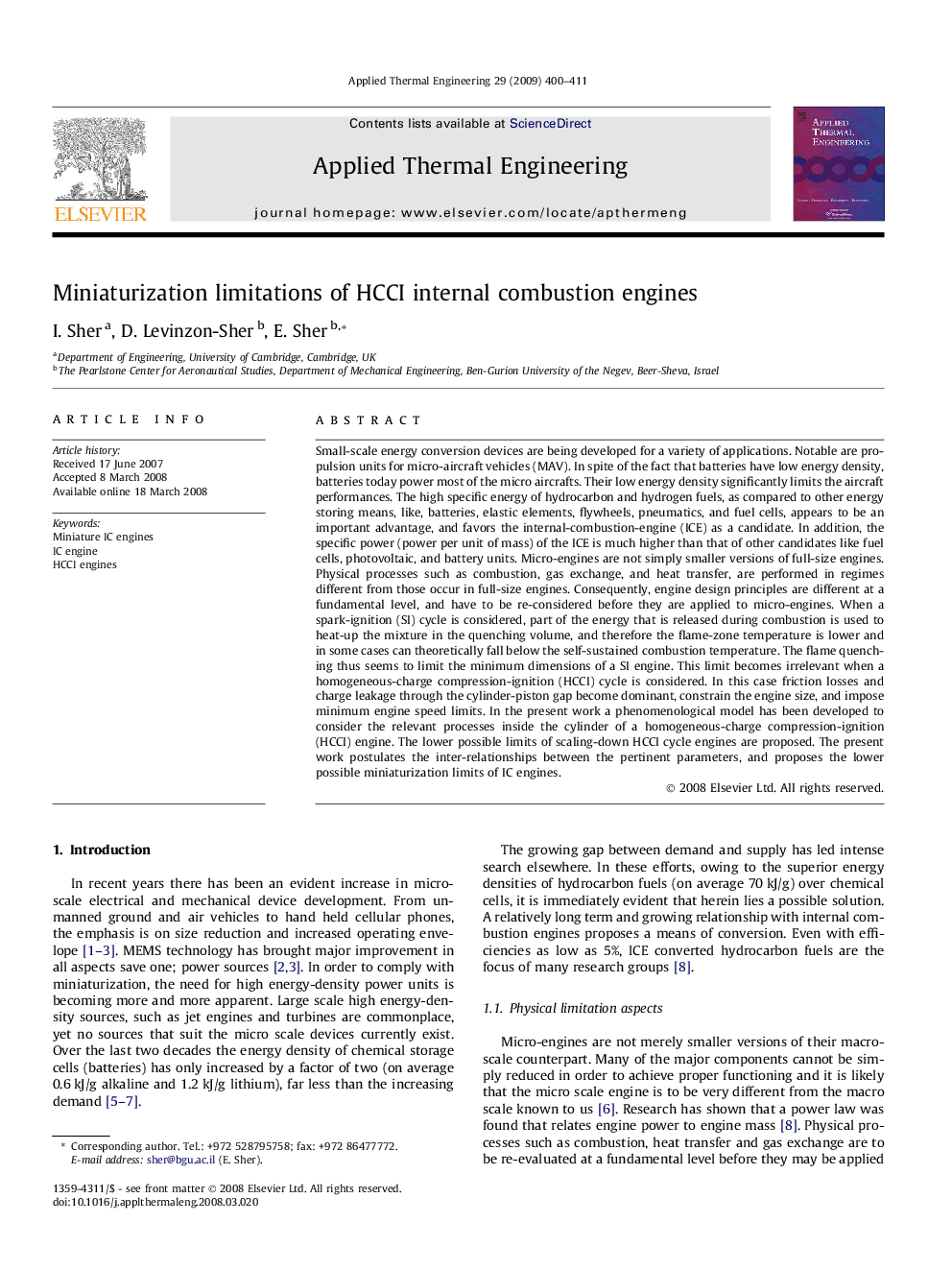| کد مقاله | کد نشریه | سال انتشار | مقاله انگلیسی | نسخه تمام متن |
|---|---|---|---|---|
| 649292 | 1457203 | 2009 | 12 صفحه PDF | دانلود رایگان |

Small-scale energy conversion devices are being developed for a variety of applications. Notable are propulsion units for micro-aircraft vehicles (MAV). In spite of the fact that batteries have low energy density, batteries today power most of the micro aircrafts. Their low energy density significantly limits the aircraft performances. The high specific energy of hydrocarbon and hydrogen fuels, as compared to other energy storing means, like, batteries, elastic elements, flywheels, pneumatics, and fuel cells, appears to be an important advantage, and favors the internal-combustion-engine (ICE) as a candidate. In addition, the specific power (power per unit of mass) of the ICE is much higher than that of other candidates like fuel cells, photovoltaic, and battery units. Micro-engines are not simply smaller versions of full-size engines. Physical processes such as combustion, gas exchange, and heat transfer, are performed in regimes different from those occur in full-size engines. Consequently, engine design principles are different at a fundamental level, and have to be re-considered before they are applied to micro-engines. When a spark-ignition (SI) cycle is considered, part of the energy that is released during combustion is used to heat-up the mixture in the quenching volume, and therefore the flame-zone temperature is lower and in some cases can theoretically fall below the self-sustained combustion temperature. The flame quenching thus seems to limit the minimum dimensions of a SI engine. This limit becomes irrelevant when a homogeneous-charge compression-ignition (HCCI) cycle is considered. In this case friction losses and charge leakage through the cylinder-piston gap become dominant, constrain the engine size, and impose minimum engine speed limits. In the present work a phenomenological model has been developed to consider the relevant processes inside the cylinder of a homogeneous-charge compression-ignition (HCCI) engine. The lower possible limits of scaling-down HCCI cycle engines are proposed. The present work postulates the inter-relationships between the pertinent parameters, and proposes the lower possible miniaturization limits of IC engines.
Journal: Applied Thermal Engineering - Volume 29, Issues 2–3, February 2009, Pages 400–411